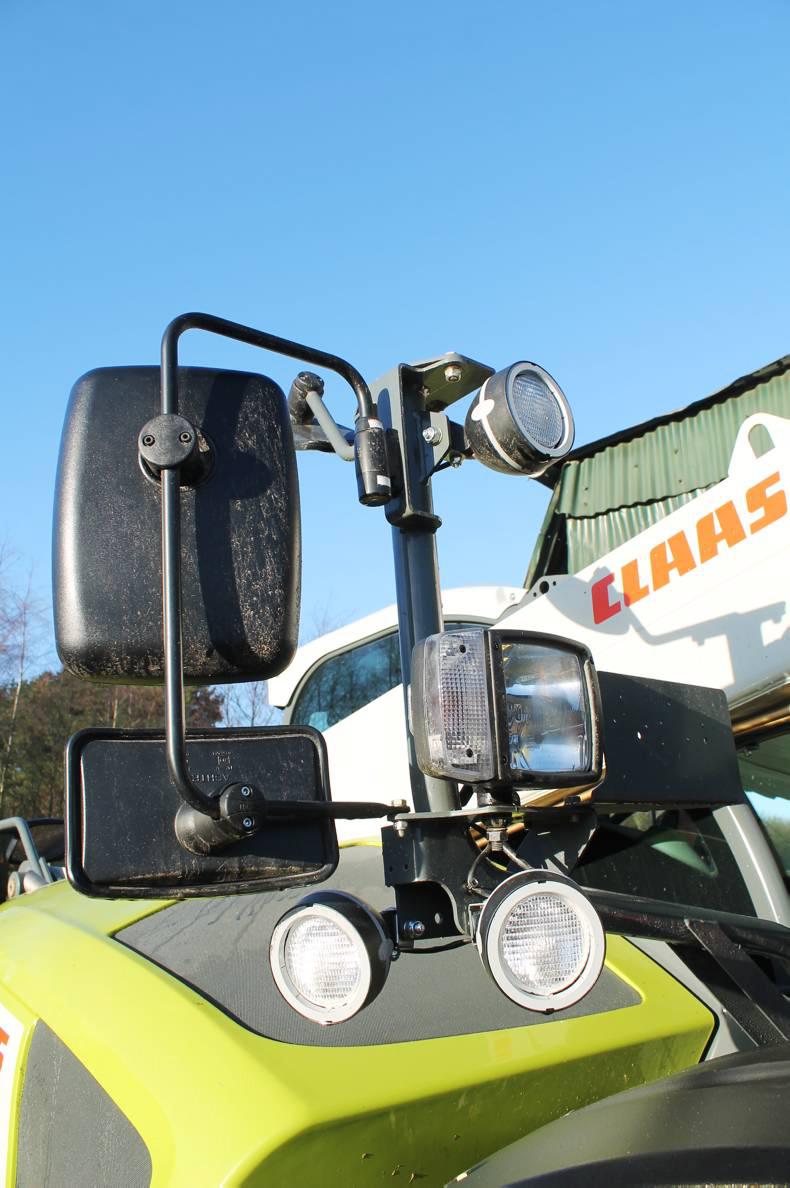In 2014 German firm Claas launched six Scorpion telescopic loaders with lifting heights ranging from between 6m to 8.75m and lifting capacity between 3t and 5.5t.
Kelly’s of Borris loaned us its demonstrator Scorpion 7035 Varipower for the test. The 7035 is a typical agricultural machine with a lifting capacity of 3.5t and maximum height of 7m. It is powered by a four-cylinder Deutz engine which develops 122hp. A passive diesel particulate filter (DPF) takes care of soot particles to meet emission regulations.
Passive DPF means the unit can re-generate at exhaust temperature rather than the much higher temperatures of forced re-generation. The transmission in the new Scorpion is described as intelligent hydrostatic Varipower drive. According to Claas, this constantly and automatically coordinates speed and thrust up to a maximum speed of 40 km/h.
The Scorpion loaders have changed considerably over the years from the Sanderson-based machine to what it is now. The current generation is built in Germany by Kramer for Claas. This is reflected in the build quality. The 7035 is put together really well.
Features to make the operator’s life easier include Smart Handling boom functions from Claas, plus various other boom functions and a reversible fan. The right dashboard, joystick and the rotary switch on the dashboard which selects the three steering modes have been redesigned.
The gauges on the right-hand pillar display information on engine temperature, forward speed and engine rpm. Directly above these is the boom load monitor.
A large curved front windscreen provides the operator with an unobstructed view. A double wiper arrangement is featured to keep the entire glass area clear on a wet day.
The boom has three different modes – forklift, bucket and manual. In forklift mode the boom automatically extends and retracts as it is raised and lowered. This is a useful feature for loading over high-sided feeders.
In bucket mode the operator extends the boom manually to suit a specific task. The telescopic section of the boom is automatically retracted as the boom is lowered.
In manual mode, the operator can extend and retract the boom as required.
A switch-operated implement lockout feature isolates implement control on the boom joystick to prevent accidental damage to attachments. The entire joystick control can be completely locked out if required for example for road transport.
Load stabiliser or boom suspension has three modes: permanently on, permanently off and auto. In auto, boom suspension comes on over 7kph and off under it.
In-cab there are lots of ventilation ports for de-fogging front, side and rear windows, plus a directable ventilation port at your feet. Keeping windows and visibility clear is crucial around yards, where there may be other people working.
Our test machine was fitted with a serious lights package. In addition to standard headlights were roof, cab and boom lights plus side-facing lights on the front right-hand light/mirror bracket.
This front bracket was also home for three mirrors; one standard, a convex mirror looking to the side and another convex looking to the ground.
In work the Scorpion proved extremely capable. Pushing and handling heavy scoops was no issue. Fully loaded it was very stable and handled its load with ease.
Our test machine featured Michelin 460/70-R24s all-round. Ground clearance was pretty good and the 7035 featured a flat underbelly.
When cleaning out sheds, the engine hood and front RH mirrors are very vulnerable. Stepping out the wheel a bit would protect the engine hood and an electrical ram to retract the mirrors could be beneficial.
All boom functions, forward/reverse shuttling and range changes are operated on the main joystick. There is a conventional forward/reverse shuttle lever on the left as well.
Overall, visibility was excellent. It is a side-boom machine, so suffers from a certain degree of blindness with the boom raised.
Our test machine also featured a pickup hitch. With some mirror magic we yoked to a trailer and drew in a load of wintered wheaten straw.
The 7035 was very manoeuvrable with the trailer, both in four-wheel steer mode and in two-wheel steer mode. From a power perspective it performed OK with the trailer but, like most telehandlers, not as well as a tractor.
In-cab storage space is little or none. There is a small recess in the middle of the dash which could accommodate a mobile phone.
Service access around the engine is good with easy access to engine oil filter, fuel filters and air filter. The fan belt is, of course, shielded by a large cover for safety which does make it a little harder to inspect.
A telescopic loader such as this with all-wheel-steer has loads of grease points. These are grouped together in banks where possible.
A service and maintenance work sticker on the outside of the rear fly window behind the driver’s door serves as a conscientious reminder to all who drive it, to pick up the grease gun and use it.
Overall, we found the Scorpion to be a very capable and comfortable machine. It has been built really well and an enormous amount of thought has been put into its boom control. A massive thumbs up. Current list price is hefty at €109,825 plus VAT, but if you are in the market for a new telehandler, then definitely have a look.






 This is a subscriber-only article
This is a subscriber-only article









SHARING OPTIONS: